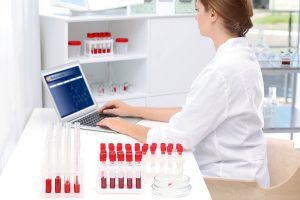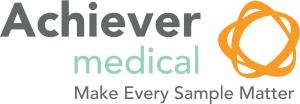The difficulty of sourcing samples from the NHS is a common cry. With demands remaining unfulfilled locally and a reported 75% of samples being sourced from overseas[1]. In contrast, recent reports also highlight that only a small percentage of samples donated in the UK are actually used in research[2].
On the surface it seems like there are enough locally sourced samples to meet researcher demand. So, why are researchers going elsewhere to find the samples they need for research?
The answer seems simple, put researchers in touch with local Biobanks and tissue providers. However, it’s not that straightforward and crucially this doesn’t just apply to Biobanks – or importantly to the UK. It’s also true in labs that store and use human tissue. Often samples are taken by one team and not used. These could potentially be used by researchers in other teams– if only they knew!
In reality, the solution probably includes a combination of things such as your standard operating procedures (SoPs), ethics and logistics. However, a laboratory information management software (LIMS) or Biobanking software could also provide some of the answers.
So, where do you even begin and how can a LIMS increase use of samples in research?
Data quality and management in tissue banks, labs and research
![]()
One of the most important areas to start with is the quality of your information. Before you can even think about exposing what samples you have available, you need to have confidence in your data. It needs to be in a centralised location that’s easily searchable.
Are you recording data consistently and in a standardised way that you can search easily?
Researchers are usually looking for very specific samples. So, for your data to be really useful, you need to hold detailed profile information about each sample and respective donor. Plus, it needs to be accurate to allow informed decisions to be made about the sample’s viability. Having this extended information also increases your sample’s chance of being selected and used in the right way.
Are you missing crucial information about the donor and the sample because you can’t record it?
Data capture and management is not just a one-off exercise. Sample tracking is important and this includes capturing laboratory data. This means you should record everything you do with a sample – and it should have an audit trail. Being able to effectively manage every step of your sample’s journey is one of the key features offered by a LIMS or Biobanking software.
Finally, you need to protect personal identifiable information (PII) as well as allow researchers to see and use detailed sample and donor profile data. A system like Achiever Medical gives you this as standard.
Getting it right from the beginning looking at donor recruitment and tissue collection processes

For both research tissue banks and researchers sourcing samples is an expensive and time-consuming business.
Donor recruitment and tissue sample collection processes alone can be costly. So, why go to all that effort just to have samples sat in storage – sometimes for years?
It’s unlikely that anyone sets out with this objective in mind. But what you do at the start can have major implications for your samples further down the line. Unfortunately, it could all be going awry right at the very beginning of the process – starting with consent.
Could samples be sitting in storage because you don’t have consent in place to allow them to be used? Or reused?
Even if you are able to capture consent information, you should try and capture it in a consistent and standardised format. Also, if you digitalise and associate consent with the donor and/or samples it makes your this data more easily accessible – and usable. This allows, for example, researchers to quickly dismiss samples that seem to meet their criteria but don’t have the required consent levels in place.
Modern LIMS and Biobanking Software like Achiever Medical hold informed consent details including opt-ins and -outs within the solution.
Understanding what tissue samples researchers want

As a Biobank, do you have the samples that researchers need? This is the million-dollar question. If you’re not collecting samples that researchers want for their research, then your samples may never be used. And this doesn’t just apply to human tissue for research.
So, how do you know what researchers are looking for? Firstly, you need to become visible. This could mean publicising the samples you have available. If you’re a UK Biobank or biorepository you could publish your sample holdings data on the UKCRC Tissue Directory.
Is the thought of organising, formatting and standardising your data stopping you publishing to an online directory such as the UKCRC Tissue Directory?
And it’s not just about the samples. How you meet and fulfil any tissue requests is critical. Your next step might be to allow authorised researchers to search across your selected sample data through an online portal. They could use different parameters to locate the required samples and then request them. In addition, you may also want to allow researchers to raise Prospective Sample Requests. This enables you to see what samples they require for future research projects as well as gain an insight into samples they require that you don’t currently have available.
However, you don’t have to limit this request process just to Biobanks and researchers. It’s something that teams within labs can also use to request and share samples. All in line with consent restrictions naturally.
Would sharing samples across teams help reduce your costs?
Finally, it’s critical that you can analyse requests as requirements change constantly. This data can help you spot trends and manage demand.
Could visibility of the most desirable samples help you decide what samples to collect in the first instance? And what could this save you?

How does the Achiever Medical laboratory information management system (LIMS) help?
Achiever Medical LIMS software gives you tools to help you ‘Make Every Sample Matter’. The LIMS system helps you make sure you’re using your samples for their intended purpose including using tissue samples in research.
Achiever Medical LIMS helps you get your data into a standardised and consistent format. Its unique collaboration tools help you to securely share your data – internally and externally. While its online portals and unique link to the UKCRC Tissue Directory help Biobanks to securely share information while still protecting PII.
Over the next few blogs we’ll be taking a look in more detail how Achiever Medical LIMS and Biobanking software helps you to ‘Make Every Sample Matter’ with topics covering:
- Data Management
- Sample Management
- Quality Control
- How LIMS Helps Promote Collaboration in Scientific Research
- Benefits of Clinical Trials and Research Data in One System
References
[1] UK Medicines Discovery Catapult and Bioindustry Association 2018 State of the Discovery Nation report
[2] Medicines Discovery Catapult, use MY data and Incisive Health ‘Issue with Tissue’ report. Discussion at use MY data’s ‘Your data, your control’ workshop, May 2018

Comments are closed.